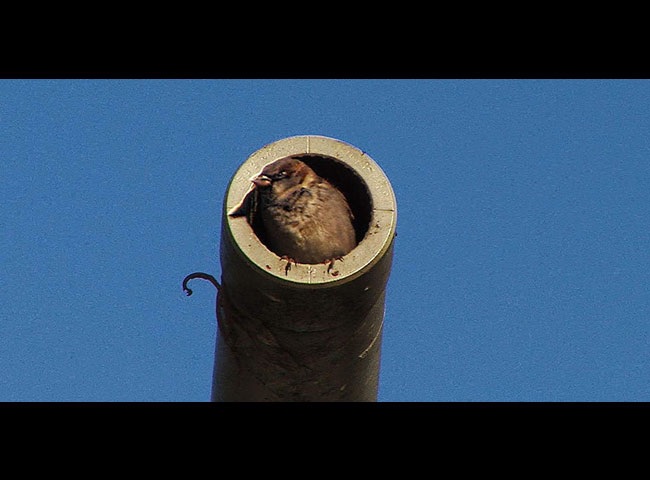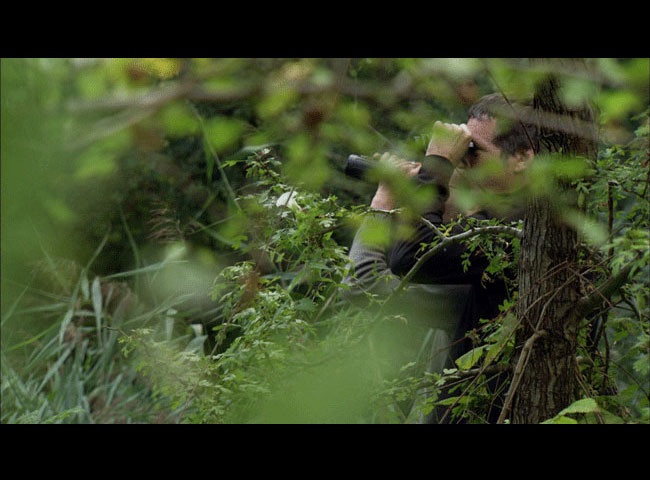Le Jour du moineau
-
Réalisé par Philip Scheffner • Écrit par Merle Kröger, Philip Scheffner
-
Allemagne • 2010 • 100 minutes • HDCam • Couleur
- Réalisation :
Philip Scheffner - Écriture :
Philip Scheffner, Merle Kröger - Image :
Bernd Meiners - Son :
Pascal Capitolin, Volker Zeigermann - Montage :
Philip Scheffner
- Production (structure) :
Pong film GmbH - Coproduction :
Blinker Filmproduktion, Worklights Media Production - Diffuseur :
ZDF/ARTE - Participation :
CNC - Ayant droit :
Pong film GmbH
- N° ISAN :
ISAN 0000-0003-8566-0000-2-0000-0000-V
Résumé
"Le 14 novembre 2005, deux nouvelles se disputent la une d’un quotidien en Allemagne. La première relate qu’un moineau a été abattu à Leeuwarden aux Pays-Bas parce qu’il semblait menacer la sécurité nationale ; la seconde qu’un soldat allemand est mort, victime d’un attentat suicide à Kaboul. Philip Scheffner est familier des rapprochements paradoxaux. Son beau The Halfmoon Files (Prix des Médiathèques au FID 2007), on s’en rappelle, s’autorisait déjà de fructueux effets de montage. Cette page de journal lui offre et un nouveau coup d’envoi et la méthode. Décidé à nouveau à partir enquêter, il va mélanger les genres, mener une investigation politique sur le style du film animalier. L’ornithologie lui offrira les armes pour poser la question : vit-on dans un état de paix ou de guerre ?
Toute la force du film tient là : dans sa légèreté, dans son caractère aérien. Ce qui ne signifie pas manque de sérieux. Bien au contraire, la patience et l’obstination du guetteur d’oiseau sont qualités requises à qui veut dénicher les vérités. Rien ici n’est négligé, mais c’est l’espace du film qui se trouve dégagé, élargi aux dimensions du ciel. Car ce ciel devient tour à tour l’écran opaque du secret militaire, le champ de bataille d’où les avions bombardent l’Afghanistan (et ailleurs), et enfin la vaste demeure de l’innocence des oiseaux. À s’aventurer dans un tel azur, aussi feuilleté qu’un roman d’espionnage, c’est incontestablement le cinéma (politique) qui y gagne de l’ampleur." (Jean-Pierre Rehm, FIDMarseille 2010)
On the 14 November 2005, two stories were competing for the front pages of a German newspaper. The first related to a sparrow that was killed in Leeuwarden in the Netherlands because it was threatening national security; the second was about
a German soldier that had been killed by a suicide bomber in Kabul. Philip Scheffner is familiar with paradoxical relationships. His beautiful The Halfmoon Files (Prix des Médiathèques FID 2007), which we recall, already demonstrated his use of montage to great effect. The front page story offers him both a new launch pad and method. Resolutely off on another path of investigation, he mixes up genres, carrying out a political investigation in the style of a wildlife documentary. Ornithology provides
him with the toolsfor asking the question: Are we at war or peace?
The strength of the film lies there: in its ethereal, aerial character. This does not imply it is not serious, on the contrary, the patience and obstinacy of a bird watcher are necessary qualities for those that wish to reveal the truth. No stone is left unturned, but it is the space of the film which is a wide open void,as vast as the sky. For it is the sky that repeatedly becomes the smoke screen of a military secret, a battlefield where planes bombard Afghanistan (and elsewhere), and the vast home to the innocent birds. To venture up into the big blue yonder is tantamount here to flicking through a spy novel and indisputably increases the scope of (political) cinema. (Jean-Pierre Rehm, FIDMarseille 2010)
Mot(s)-clé(s) thématique(s)
À propos du film
Sélections et distinctions
- 2018 • Visions du Réel • Nyon (Suisse) • Atelier Philip Scheffner
- 2014 • Les Rencontres du cinéma documentaire • Montreuil (France) • Sélection
- 2011 • Images en bibliothèques • Paris (France) • Film soutenu par la Commission nationale de sélection des médiathèques
- 2010 • FID (Festival International du Documentaire) • Marseille (France) • Compétition Internationale
Comment avoir accès au film ?
-
Édition DVD
- Il n'existe pas d'édition DVD à notre connaissance
-
Accès VOD
- Il n'existe pas d'accès en VOD à notre connaissance
- Diffusion non commerciale / Consultation


